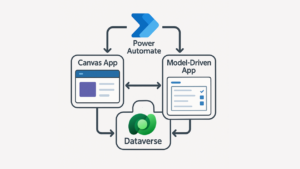Custom Software Development vs. System Integration: What Are the Differences?
Modern enterprises are under constant pressure to adapt, scale, and innovate while maximizing the value of their existing technology investments. As organizations modernize their IT environments, they often face a critical decision: Should we build a custom application or integrate the systems we already have? The answer isn’t one-size-fits-all. It requires a clear understanding of the options, the outcomes, and the long-term impact on performance and growth.
When evaluating your custom software development vs system integration, the choice depends on your goals, resources, and how much flexibility your digital architecture needs. Custom development provides complete control and adaptability, while system integration uses and extends the functionality of what’s already in place. Both strategies have their own advantages, and understanding the differences is essential for making the right strategic choice, especially in complex enterprise ecosystems like Microsoft’s.
At i3solutions, we help enterprise organizations evaluate and execute the right mix of custom software vs system integration. Whether you’re starting fresh or optimizing existing tools through system integration for Microsoft Power Platform, our team can guarantee that every solution is tailored, scalable, and aligned with your transformation goals.
What Is Custom Software Development?
Custom software development is the process of building applications from the ground up to meet your organization’s business requirements. Unlike off-the-shelf solutions, custom software is made to fit specific workflows, data structures, and user roles, ensuring the solution aligns perfectly with how the business operates. This approach is especially valuable for companies with specialized processes that generic software can’t fully support.
Designing software specifically for your organization’s users, data, and operational logic allows custom development to give you full control over the user experience, business rules, and system integrations. This means everything from the interface to the backend architecture can be optimized for performance, compliance, and scalability. For businesses going through complex requirements, this level of customization allows for a sharper competitive edge and long-term adaptability.
Custom Microsoft application development is commonly done using platforms like .NET, Azure, and Power Apps. Each of these offers powerful tools for creating strong, secure, and scalable systems. These technologies not only support your custom workflows but also make it possible to connect siloed systems with Power Platform and Azure, creating a unified environment where data flows smoothly across departments and platforms.
Use Cases for Custom Software Development
Custom software development is often the right choice when off-the-shelf tools fall short, particularly in scenarios where organizations rely on complex spreadsheets or outdated legacy systems. These stopgap solutions can be difficult to scale, prone to error, and lacking in visibility. Replacing them with a purpose-built application lets your teams automate manual tasks, enforce data integrity, and improve overall efficiency, all while aligning technology with actual business needs.
Another key use case is the development of line-of-business applications that support specialized workflows or industry-specific requirements. Whether it’s a custom portal for internal teams or a client-facing dashboard with advanced data visualizations, these solutions are tailored to how the organization operates. With the flexibility to incorporate unique data models and user roles, businesses can deliver more impactful experiences, often using tools like Power Apps and Azure to drive performance and scalability.
What Is System Integration?
System integration is the process of connecting existing tools, platforms, and data sources to function as a unified, streamlined ecosystem. Rather than building new applications from scratch, this approach focuses on maximizing the value of systems already in place. This brings together platforms such as Dynamics 365 vs Salesforce, and ERP systems to ensure they operate cohesively. For many enterprises, integration is a strategic move to enhance operational efficiency without disrupting core infrastructure.
Linking these systems allows your organization to reduce data silos and enable real-time visibility across departments. System integration also supports the automation of cross-system workflows, helping your team avoid redundant tasks and manual data entry. For instance, a lead generated in Salesforce can automatically trigger actions in Dynamics 365 or update records in SharePoint. This can save you time while improving data consistency across platforms.
Integration is often powered by APIs, prebuilt connectors, and strong platforms like Microsoft Power Automate or Azure Logic Apps. These tools make it possible to create secure connections with minimal code, speeding up deployment and reducing maintenance overhead. At i3solutions, our Microsoft system integration experts help enterprise clients design and implement these solutions to unlock more value from their Microsoft investments and enable smarter, more connected operations.
Use Cases for System Integration
System integration plays a huge role in helping your company simplify operations by syncing data between key platforms, such as CRM and ERP systems. For example, integrating Dynamics 365 with an ERP platform ensures that your customer records, sales data, and inventory levels stay consistent and up to date across departments. This kind of real-time data synchronization reduces duplication, improves decision-making, and enhances collaboration between teams that rely on different systems to do their jobs.
Another common use case involves automating complex, multi-step workflows that span multiple platforms. Whether it’s onboarding a new customer, processing an order, or managing approvals, integration tools like Power Automate or Azure software development can orchestrate these tasks across disconnected systems. Organizations also often utilize integration to create a unified interface that consolidates data and functions from various sources. This eliminates the need for users to switch between apps, enabling a more intuitive user experience.
Key Differences at a Glance
| Aspect | Custom Software Development | System Integration |
| Goal | Build something new | Connect what already exists |
| Scope | Application logic, UI, data model | Workflow, APIs, connectors |
| Flexibility | Fully customizable | Limited to platform capabilities |
| Time to Deploy | Longer (but highly tailored) | Faster (leverages existing tools) |
| Cost | Higher upfront investment | Lower if existing tools suffice |
When to Use Custom Software vs System Integration
Choosing between custom software development and system integration is a strategic decision. Knowing when to use each approach can mean the difference between a solution that empowers your team and one that creates unnecessary complexity. Understanding the strengths and limitations of each helps your company to align its decisions with its operational goals and future growth.
When to Choose Custom Development
Custom development is the right path when your business processes are highly specialized and can’t be replicated with standard software. If existing platforms force your team into inefficient workarounds or simply don’t support your workflows, a custom-built application can provide the flexibility you need. You can either design a new customer portal, internal tool, or analytics dashboard, and custom software ensures every component is purpose-built for your unique needs.
This approach is also ideal when long-term scalability and full ownership are top priorities. With custom development, you maintain control over every aspect of the solution, from user experience to system logic and data architecture. It allows your organization to evolve the application over time without relying on third-party feature roadmaps or licensing restrictions. For enterprise teams investing in core systems that must adapt alongside the business, this control is a significant advantage.
When to Choose System Integration
System integration is often the smarter choice when your current tools already meet most of your business needs, but they don’t communicate effectively with one another. If your CRM, ERP, and other platforms each capture valuable data but operate in silos, integration can bring those systems together. It allows for consistent data flow, reducing errors and manual entry, and ensures that teams are always working with the most up-to-date information.
Integration is also ideal when you’re looking for quick wins without the cost or time of rebuilding your software environment. Automating repetitive, multi-step workflows across platforms using tools like Microsoft Power Automate or Azure Logic Apps can significantly increase efficiency with minimal disruption. When implemented by experienced partners like Microsoft system integration experts, these solutions extend the value of your existing tools while accelerating Digital Transformation.
How to Decide: Build Custom or Integrate Existing?
The decision to pursue custom software development or system integration shouldn’t be driven by technical preference alone. It should align with your broader business strategy. The right path depends on what you’re trying to achieve: accelerating innovation, optimizing operations, or enabling both. Understanding how each approach supports your strategic goals is key to making an informed, future-ready decision.
1. Business Objectives
Your business goals should guide whether to build or integrate. If you’re focused on innovation, market differentiation, or delivering a unique user experience, a custom build may be justified. On the other hand, if your objective is optimization and making existing systems more efficient, then integration is often the smarter move.
2. Existing Technology Stack
Organizations that have already invested in platforms like Dynamics 365, SharePoint, or Azure should consider whether integration can unlock untapped value. When those systems are underutilized or disconnected, system integration offers a faster, lower-risk path to results, especially within the Microsoft ecosystem.
3. User Experience Requirements
The success of any solution often hinges on adoption, which is driven by user experience. Custom applications provide full control over UI/UX design, making them ideal when the user interface is central to productivity. In contrast, integrated tools may come with design limitations, but still offer a familiar experience within existing platforms.
4. Budget & Timeline Constraints
Custom development typically involves longer timelines and higher upfront costs but offers long-term flexibility and ownership. Integration projects can often be deployed more quickly and at lower cost, which is ideal for teams seeking rapid ROI. The trade-off lies in customization and future adaptability.
5. Compliance and Security Needs
For organizations in regulated industries, compliance with standards like FedRAMP, HIPAA, or CMMC can be a factor in the decision. Pre-certified cloud platforms often make integration more appealing by reducing security overhead and simplifying audits, while still allowing for stronger automation and control.
At i3solutions, we help enterprises make smart, strategic choices between integration and development while balancing the speed, cost, compliance, and innovation. With deep expertise in Microsoft technologies and a proven track record of delivering tailored enterprise software solutions, we guide you toward outcomes that scale with your business and deliver measurable impact.
How i3solutions Supports Both Approaches
As a Microsoft Specialist, i3solutions provides expert guidance and execution for both custom development and system integration, ensuring every solution aligns with your business goals, technical landscape, and compliance requirements. For organizations needing to build from the ground up, we build secure, scalable custom applications using Microsoft technologies. These solutions are tailored to unique enterprise workflows and designed to grow with your organization while meeting the highest standards of security and performance.
For clients looking to unify their technology stack, we act as a trusted Microsoft system integration company, connecting platforms like SharePoint, Dynamics 365, Salesforce, and various ERP systems. Using tools such as Power Automate, Azure Logic Apps, and custom APIs, we create smooth integrations that eliminate data silos, automate workflows, and improve operational efficiency. We can do this without the need to replace existing systems.
i3solutions also offers strategic consulting across architecture, security, and long-term sustainability. We have deep experience delivering tailored enterprise software solutions to both commercial and government clients, including those operating under strict compliance mandates such as FedRAMP, HIPAA, and CMMC. Our approach ensures that every solution (custom or integrated) is secure, future-ready, and aligned with your company’s vision.
Why i3solutions is the Right Partner
i3solutions is a Microsoft-focused application development and integration partner with a track record of delivering results for complex, enterprise-grade projects. Our team combines deep technical expertise with a strategic mindset to help clients modernize intelligently, advising them on the right balance between custom software vs system integration, or when a hybrid approach is best suited to their goals.
Trusted by both enterprise and public-sector organizations, we specialize in guiding clients through the challenges of digital transformation. Our enterprise application development services, backed by hands-on experience in Power Platform, Dynamics 365, SharePoint, and Azure, help organizations make the most of their investments while meeting compliance, scalability, and performance requirements.
What sets us apart is our ability to advise not just on how to execute, but what to build or integrate in the first place. Our experts help you weigh trade-offs, avoid pitfalls, and create solutions that are secure, future-ready, and aligned with your goals.











